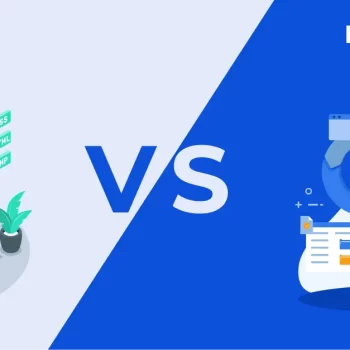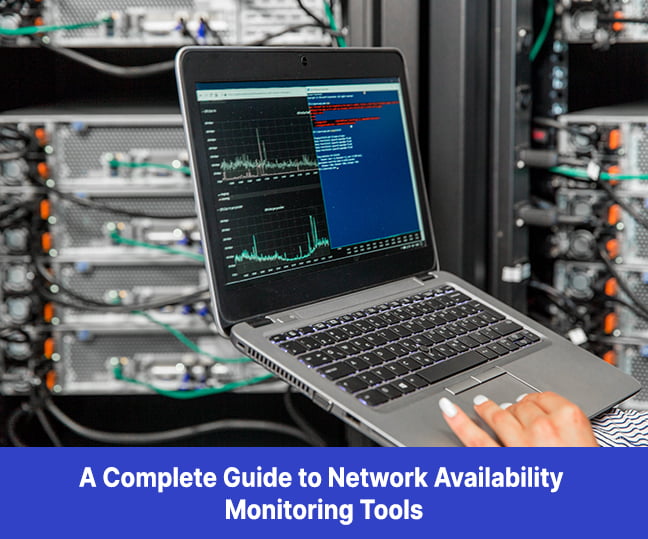For enterprises, the integration of cloud services, particularly Amazon Web Services (AWS), into the core infrastructure has become ubiquitous. The widespread adoption is driven by AWS’ extensive suite of scalable, flexible, and cost-effective services, ranging from compute and storage solutions to more advanced machine learning and analytics services.
Hence, AWS monitoring is a necessity for optimizing resource utilization and cost management while ensuring the reliability, availability, and performance of key services. Moreover, in the context of modern DevOps and agile practices, AWS monitoring plays a big role in enabling continuous integration and deployment pipelines by providing real-time insights into system performance and alerting on issues before they affect end-users.
In essence, AWS monitoring enables enterprises to maintain operational excellence by ensuring their AWS-based applications and services are running efficiently.
Related blog: AWS Monitoring Tools
How does AWS monitoring work?
AWS monitoring refers to the process of continuously observing, tracking, and managing the performance, health, and utilization of resources deployed on Amazon Web Services, a leading cloud computing platform.
Effective AWS monitoring encompasses the tracking of application performance, resource consumption, network traffic patterns, and security postures across one’s AWS ecosystem. It involves collecting, analyzing, and correlating metrics and logs from various AWS services like Amazon EC2, Amazon RDS, Amazon S3, and Amazon VPC, to name a few.
The goal is to gain insights into operational performance, identify potential issues before they escalate, optimize resource usage, and enhance security and compliance.
Key components of AWS monitoring in ITIM solutions
Performance monitoring
Performance monitoring involves a detailed analysis and oversight of the operational efficiency of deployed resources. It is critical for applications running on services such as Amazon EC2, Amazon RDS, and AWS Lambda, where metrics like CPU utilization, memory usage, disk input/output operations, and network throughput are vital indicators of health.
Administrators can pinpoint performance bottlenecks, such as a CPU maxing out due to excessive load or memory leaks causing slowdowns, by closely monitoring these metrics. After all, timely identification and resolution of these issues help maintain the smooth operation of applications, ensuring they meet the predefined performance criteria for optimal user experience and system reliability.
Cost monitoring
AWS’s pay-as-you-go pricing model, while offering flexibility and scalability, also calls for vigilant management of resource usage to avoid unnecessary expenditures. Cost monitoring addresses this need by providing visibility into how resources are consumed across various AWS services.
It includes analyzing usage patterns, identifying resources that are underutilized or lying idle, and suggesting modifications or terminations to avoid accruing needless costs. This component of AWS monitoring is important for maintaining financial optimization in the cloud, enabling enterprises to better allocate their IT budgets by paying only for what they truly need.
Security monitoring

As cyber threats are increasingly sophisticated and pervasive, security monitoring within AWS environments has become a moment of truth. It focuses on safeguarding data and applications from unauthorized access and other security threats by continuously scanning for anomalous activity, such as unusual API calls or unexpected network traffic patterns.
Hence, security teams can promptly detect and mitigate potential security incidents. This proactive stance makes sure that vulnerabilities are quickly addressed, maintaining the integrity and confidentiality of cloud resources.
Compliance monitoring
For enterprises operating in regulated industries, compliance monitoring ensures that their AWS deployments adhere to external regulations and internal policies. This continuous verification process involves assessing configurations, access controls, and data handling practices against established compliance frameworks such as GDPR, HIPAA, or SOC 2.
Through automated tools and regular audits, compliance monitoring helps in identifying and rectifying non-compliant resources or practices, thereby avoiding legal penalties and safeguarding the enterprise’s reputation.
Availability and reliability monitoring
The backbone of any cloud service is its availability and reliability to end-users. In AWS, monitoring these involves tracking the uptime, response times, and error rates. So, it’s crucial to set up alarms and notifications for any deviations from expected performance thresholds.
Such a level of vigilance ensures that any issues affecting the availability or reliability of services are immediately identified and resolved, minimizing downtime and maintaining a seamless service experience for users.
Resource utilization monitoring
Utilization of resources is important in cloud computing to ensure that enterprises are not over or under-provisioning their AWS services. Resource utilization monitoring provides insights into the usage efficiency of instances, storage, and network resources, helping in optimizing deployments to match actual workload demands.
Enterprises can adjust their resource allocations by analyzing metrics related to capacity utilization, storage occupancy, and bandwidth usage, ensuring they are getting the most out of their AWS investment.
AWS workflow automation

AWS workflow automation marks a huge stride toward eliminating the mundane, time-consuming tasks that often bog down the management of AWS applications. Enterprises can set up automated workflows to schedule tasks such as backups, scaling, and deployment processes, thereby reducing human error and freeing up valuable IT resources for more strategic initiatives.
It streamlines operations and ensures that critical procedures are carried out consistently, enhancing the reliability and performance of cloud services. The ability to automate responses to certain triggers or metrics further optimizes resource utilization and operational costs.
AWS event monitoring
Staying abreast of events in real-time is critical for maintaining system integrity and performance. AWS event monitoring employs an intelligent alert and notification system that ensures stakeholders are promptly informed of any issues, changes, or updates within their AWS ecosystem. This immediate visibility into AWS events allows for quick response and resolution of potential issues before they escalate, ensuring uninterrupted service delivery.
Whether it’s a sudden spike in traffic, a failed deployment, or a security threat, AWS event monitoring keeps teams informed and empowered to safeguard the cloud environment against unforeseen challenges.
AWS dashboard and reports

AWS dashboard and reports offer a comprehensive view of AWS resource utilization, performance metrics, and operational health. Customizable reports drawn from this dashboard allow for deep insights into various aspects of the AWS environment, enabling data-driven decision-making.
By aggregating and visualizing data from across AWS services, the dashboard and reports facilitate trend analysis, cost tracking, and performance benchmarking, helping enterprises optimize their cloud operations. The integrated view enhances operational transparency and helps in strategic planning and continuous improvement of AWS deployments.
Related blog: Top Metrics to Monitor for AWS (ELB) Elastic Load Balancing



















